Today’s book review is a relatively new book, published in March by Bunka Publishing. The author of the book is Norio Nakanishi and the title of the book is Textiles that are loved around the world & Dresses. Well, at least that’s the official English title on the cover. It is a book about famous textiles from around the world, and includes dresses (and their patterns) that are made out of these textiles. There are 12 dress patterns in featured fabrics and 8 variations in basic solids/prints, patterns are available for sizes S-LL. Let’s see how many fabrics you can identify by just looking at the dress!
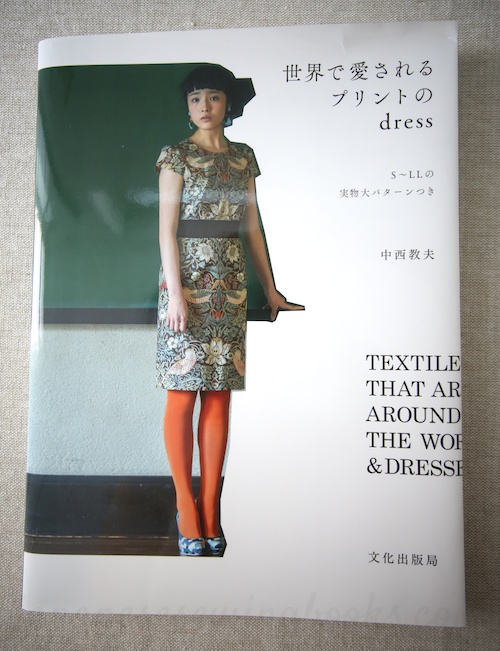
The first dress in the book is the one shown on the cover. I actually bought this book for this pattern. I love the structured look of this dress and you can see how the fabric is used with the line of symmetry down the centre front of the dress. Do you know where the fabric is from? Click on this link to find out.
The second dress is a wrap dress with a ribbon tie belt. The belt is separate from the dress by the way, and made with printed fabric on one side and solid black on the other. This should be a much easier fabric to guess. It’s a fabric also from the UK, found very frequently in Japanese sewing books. Answer here
The next dress reminds me of the 1920’s…. movies like the Great Gatsby. The notes accompanying this dress tells us that the fabric is from UK Harlequin Arkona collection. Unfortunately the only link I found was to a Japanese website which appears to be down.
Another dress that I love, though I would not necessary pair it with blue tights. This should be an easy fabric to guess. It’s from a craft brand by a Norwegian designer Tone Finnanger. You may even have one of her sewing books. Her fabrics are sweet and beautiful.
Can you name this next fabric? This retro looking fabric was designed by British designer Fiona Howard for UK Sanderson. The dress looks like two separate pieces but it is actually sewn together. The hem of the white blouse is gathered, and at the waistline of the skirt there are many tucks. It does help to spread the fabric out nicely.
This retro fabric is by Swedish designer Mona Björk, and was first released in the 1960s. You can still buy this fabric. Imagine how popular it must be! You can see all the colors of this fabric here.
I love this dress and the fabric is perfect for it. The colors are muted and not loud, yet when you take a closer look, it is full of fine details. The notes says that it is Guerino from Liberty Art fabrics, but I just could not find it anywhere by searching in English. I finally found it on Rakuten Japan, and noted that it is made in Japan. So I guess it is a Japan only print? The image on Rakuten doesn’t seem to do it justice though, someone seemed to have overcontrasted the colors on the image. From the book it looks a lot more muted and full of details. If you have seen Liberty fabrics in real life you will know what I mean. The dress itself is a V-neck, drop waist, gathered skirt. Very feminine and soft looking, perfect for the fabric which is a tana lawn cotton. I’ve heard this term used with Liberty fabrics all the time, but never really knew what the term Tana Lawn meant. Till I found this blog didyoumakethat.com which gives a great explanation. Now I know why Liberty fabrics are so soft and so expensive!
Another Liberty fabric, excerpt from the Liberty UK Blog – Floral Eve – this design is taken from a large botanical painting called ‘The Herbarium Specimen‘, painted by Rachel Pedder Smith, which is over five metres long and took seven hundred and sixty six days to complete. This project brought together art and science, depicting one specimen to represent each flowering plant family painted in the order of a contemporary DNA-based classification system. We chose the most floral elements of the painting for this design.
Could not find this on the main Liberty website as well, but found it on Rakuten.co.jp
This particular textile is actually a light upholstery fabric with a woven leaf design. KALLIANTHI collection by Clarissa Hulse for UK Harlequin. I love the sheen of the fabric and I guess the fact that it is thicker than regular cotton, means that it will hold the shape of this particular dress better than a soft cotton.
The book also includes variations of the same patterns but in solid colors or simple prints. This helps you to visualize the dress patterns in alternative fabrics.
This dress is actually using a very fine polka dotted print, isn’t it pretty!
There are a couple of pages on general dress sewing techniques, with black and white step by step photographs. The main lessons are for sewing a concealed zip, finishing the edges of a round neckline with bias or facing, as well as finishing a V-shape neckline.
I must say that the instructions seem to be rather wordy, but the good thing is that for each dress pattern, there is a separate size chart that indicates the measurements of the completed garment.
As for the illustrated steps, only the steps that are unique to the dress are displayed in diagrams. Common steps like sewing of shoulder seams, side seams, hemming etc are not shown and are instead listed in the text instructions.
There are two full size, double-sided pattern sheets attached.
Title : 世界で愛されるプリントのdress
Textiles that are loved around the world & Dresses
Author : 中西 教夫 Norio Nakanishi
ISBN : 978-4-579-11521-1
Sekai De Ai Sareru Print No Dress / Nakanishi Norio / Cho



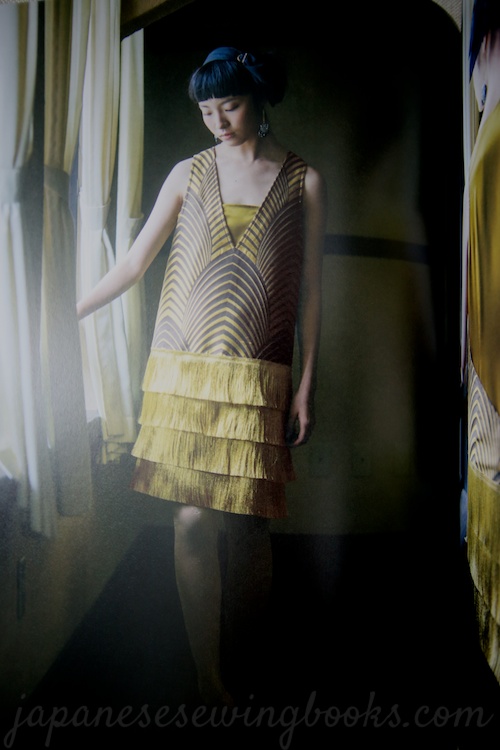
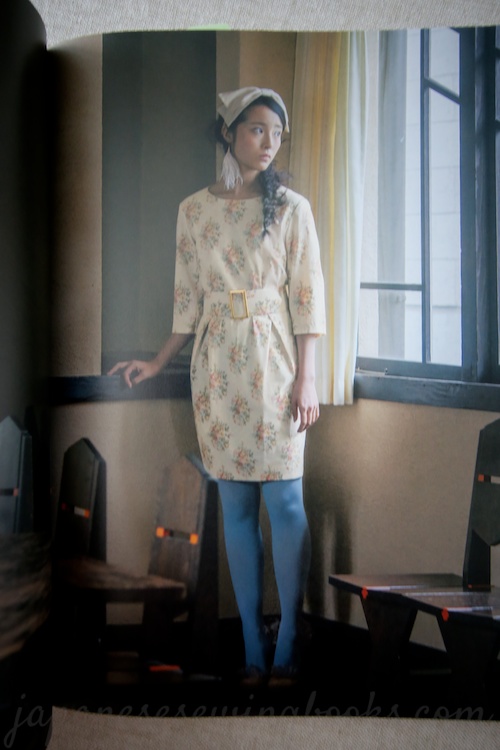

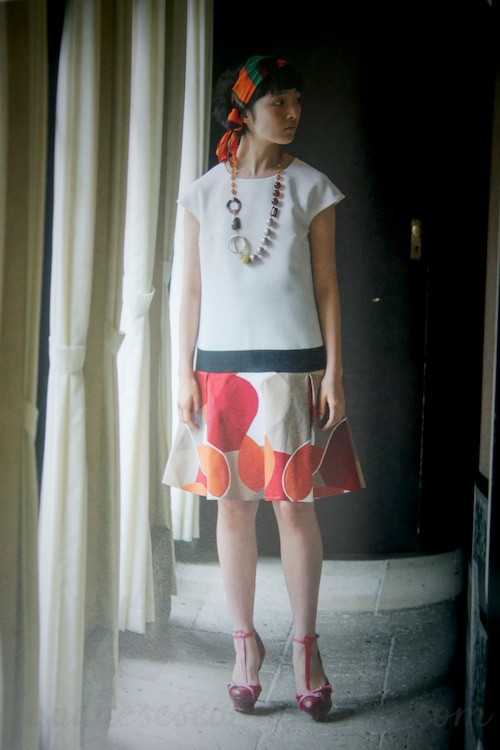


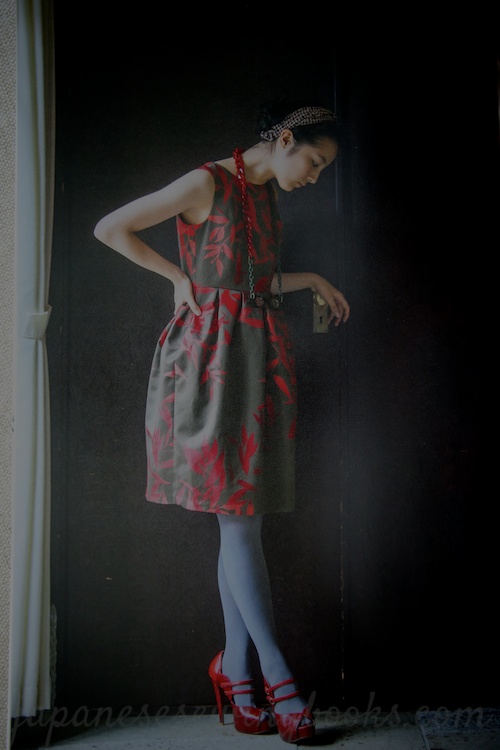
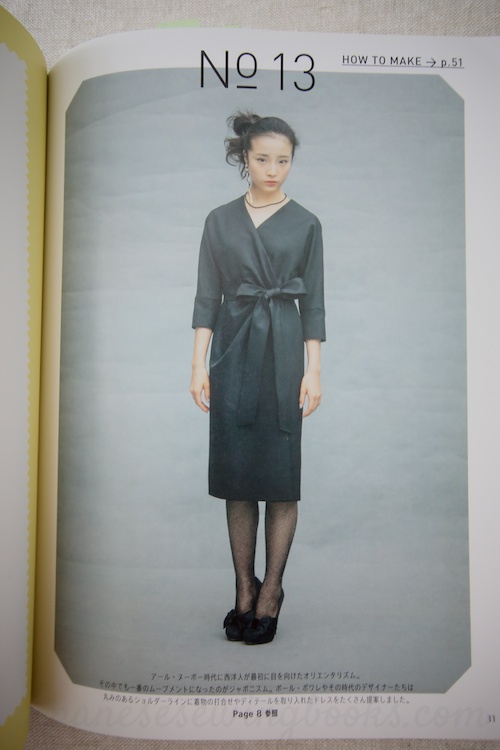

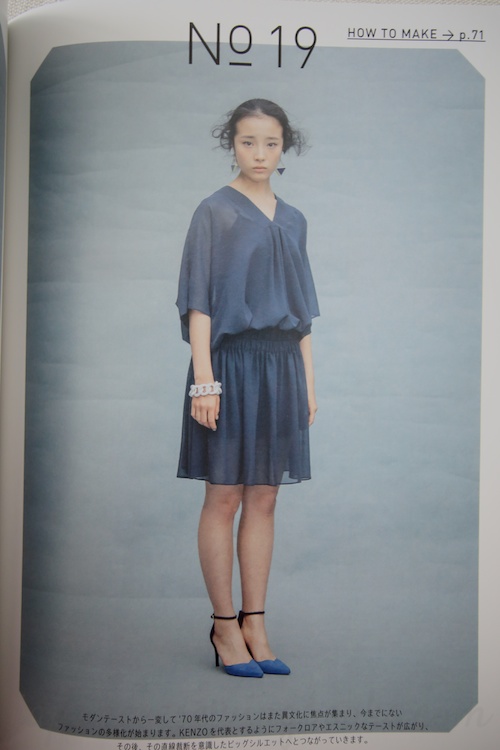



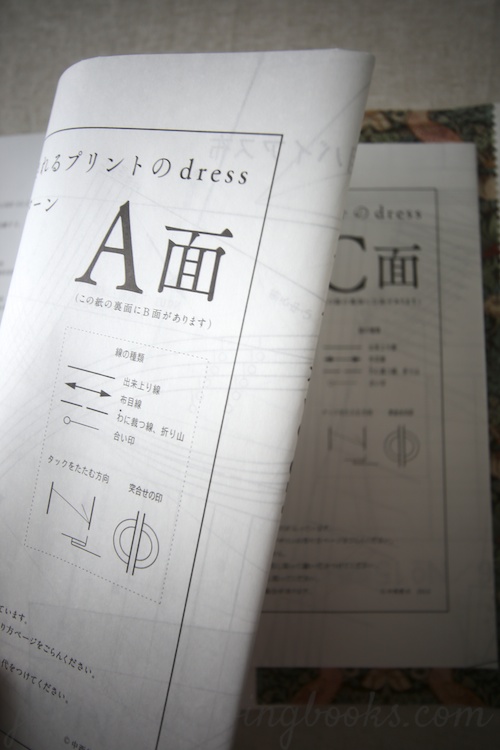
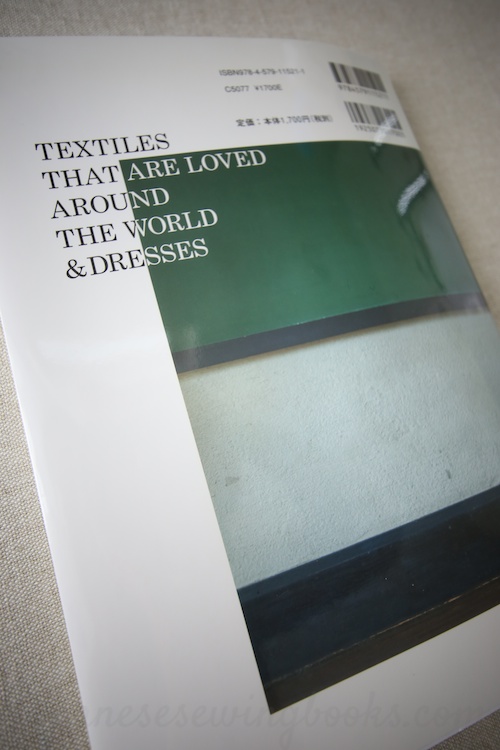

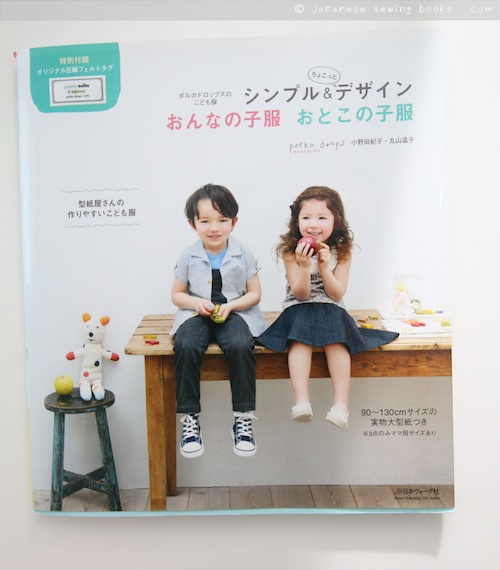

4 Comments
Thanks for the review. I prefer the Liberty of London version of Strawberry Thief; the birds on the William Morris version are huge.
Wow – there are some really pretty dresses and it is nice to see how the fabric is used. Thanks for the review!
[…] Those of you following me on instagram must have seen my post asking for opinions about making this dress on the cover of this book. (Read the full review here) […]
[…] One of the dresses included is this one! If you want the pattern for it without drafting it yourself you can read the book review here […]